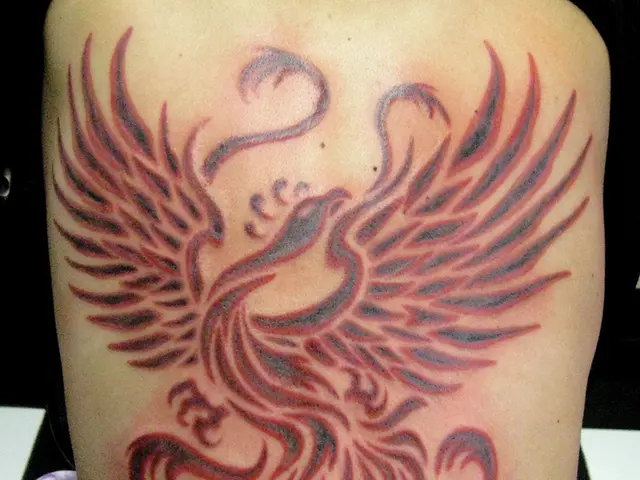Severe rosacea outbreak: Understanding causes, signs, and remedies
Rosacea Fulminans Unleashed:
Rosacea Fulminans is a severe, rare skin condition that pops up unexpectedly and targets the central part of the face, mostly attacking the chin, cheeks, and nose. Also known as Pyoderma Facialis, this condition presents as fiery red, swollen, and painful lumps and pimples, merging together like never-before.
Compared to regular rosacea or acne, these symptoms are much more alarming in terms of severity and speed. Mostly affecting females of childbearing age, this condition's origins remain a mystery, though a 2020 review hints at a potential link with inflammatory bowel disease and pregnancy (since you asked).
If you've had some form of rosacea before, you're more likely to face this beast. Stress, hormonal fluctuations, and certain medications could also be the culprit triggering this pint-sized nightmare. According to a 2021 literature review, specific dietary factors might also exacerbate the condition, but remember, this isn't unique to rosacea fulminans.
Potential dietary triggers include spicy foods that'll set your face on fire, alcohol that'll make your cheeks dance, and certain foods containing cinnamaldehyde such as chocolate, tomatoes, and citrus fruits that'll leave you feeling flushed. Histamine-rich foods and beverages like wine, aged cheese, and processed meats could also up the ante. But remember, as a unique snowflake, your dietary triggers might differ from others, so consult your healthcare professional for personalized advice.
A Face Full of Symptoms
Rosacea Fulminans' symptoms are as alarming as they are persistent. Expect redness and pustules, papules, and nodules to merge and cause swelling and inflammation. You might also experience flushing and blushing, stinging, and burning sensations on your skin. Some unfortunate souls may even experience ocular symptoms like dry, burning, itching eyes, and light sensitivity. Fever and fatigue are rare, but don't count them out entirely.
Time to Get Healed
Treatment options for Rosacea Fulminans might include corticosteroids, oral isotretinoin, and a grin and bear it approach. In a 2016 case study, antibiotics combined with corticosteroids and lifestyle changes did the trick for one lucky patient.
Managing your stress levels is crucial here. You could try mindfulness meditation, deep breathing exercises, regular exercise, or journaling to ease the toll stress takes on your body. Dietary adjustments like cutting back on alcohol might help too. When it comes to skincare, be gentle - use products fit for a baby's bottom on your face.
Seeking medical attention is essential if you experience symptoms that go beyond regular rosacea or acne, or if your symptoms persist or worsen despite trying over-the-counter medications or rosacea therapies. If you notice eye irritation or inflammation, or experience systemic symptoms like fever, don't wait – act fast to receive an accurate diagnosis and start treatment. Early intervention can help you manage your symptoms effectively and improve your overall quality of life.
Connecting with a healthcare professional will ensure you receive personalized care tailored to your unique needs, paving the way for comprehensive management strategies that'll guide you through this difficult time.
- The severe skin condition, Rosacea Fulminans, can cause redness, pustules, papules, and nodules that merge together, leading to swelling and inflammation on the central part of the face, particularly the chin, cheeks, and nose.
- Rosacea Fulminans can also result in flushing and blushing, stinging and burning sensations on the skin, dry, burning, itching eyes, and light sensitivity, with some people even experiencing ocular symptoms like dry, burning, itching eyes, and light sensitivity.
- Dermatology, the science of skin care, might offer potential relief through treatment options like corticosteroids, oral isotretinoin, antibiotics, or a combination of these, along with lifestyle changes such as managing stress levels, making dietary adjustments, and practicing gentle skincare routines.
- Proper medical consultation with healthcare professionals is essential to receive a personalized treatment plan for managing Rosacea Fulminans effectively, as it is often linked with chronic diseases, medical-conditions, and can cause persistent and alarming symptoms that go beyond regular rosacea or acne.








